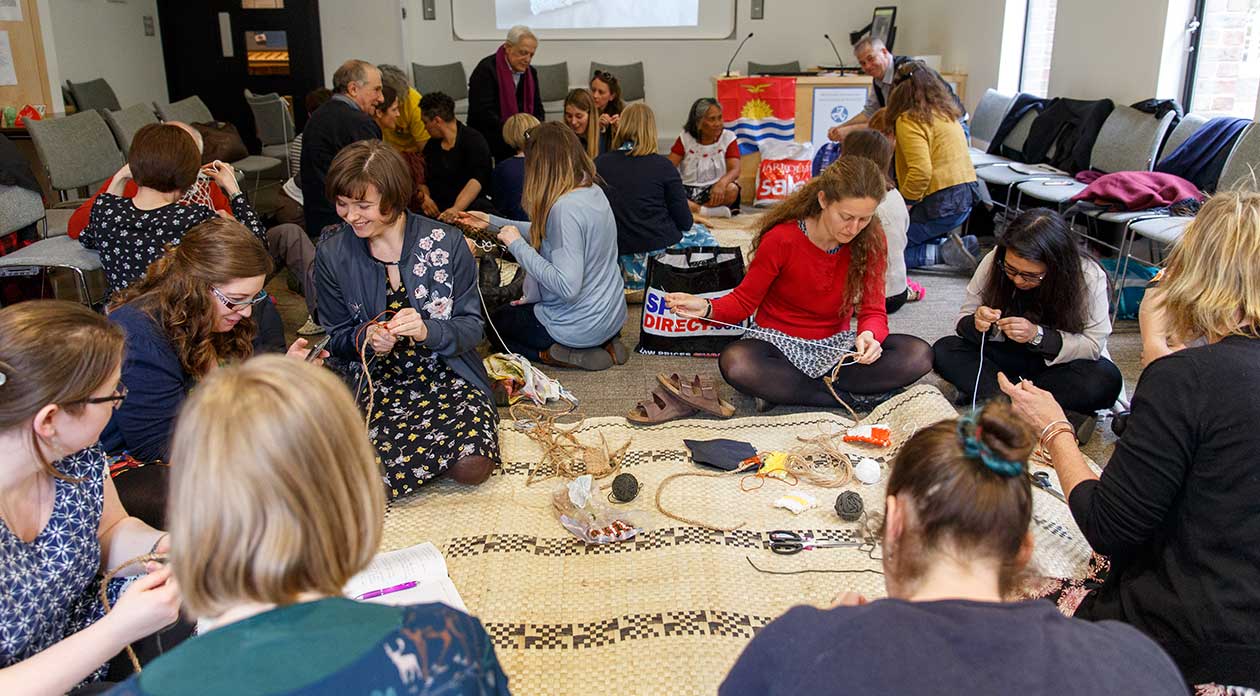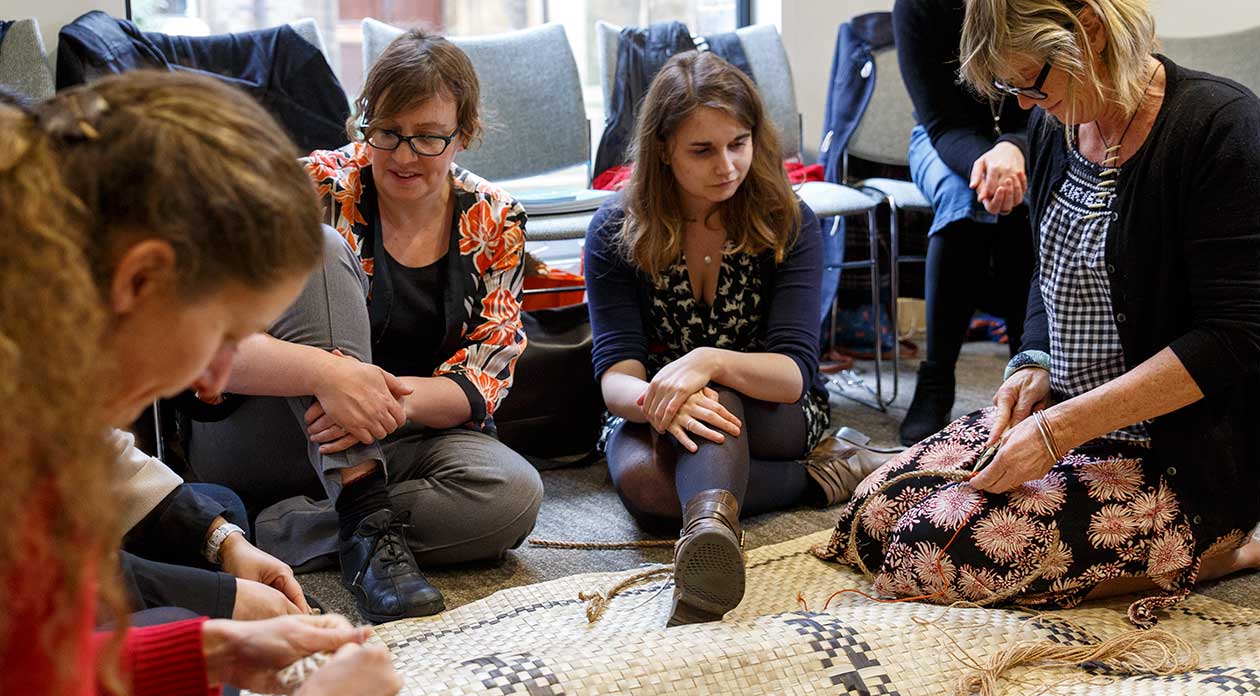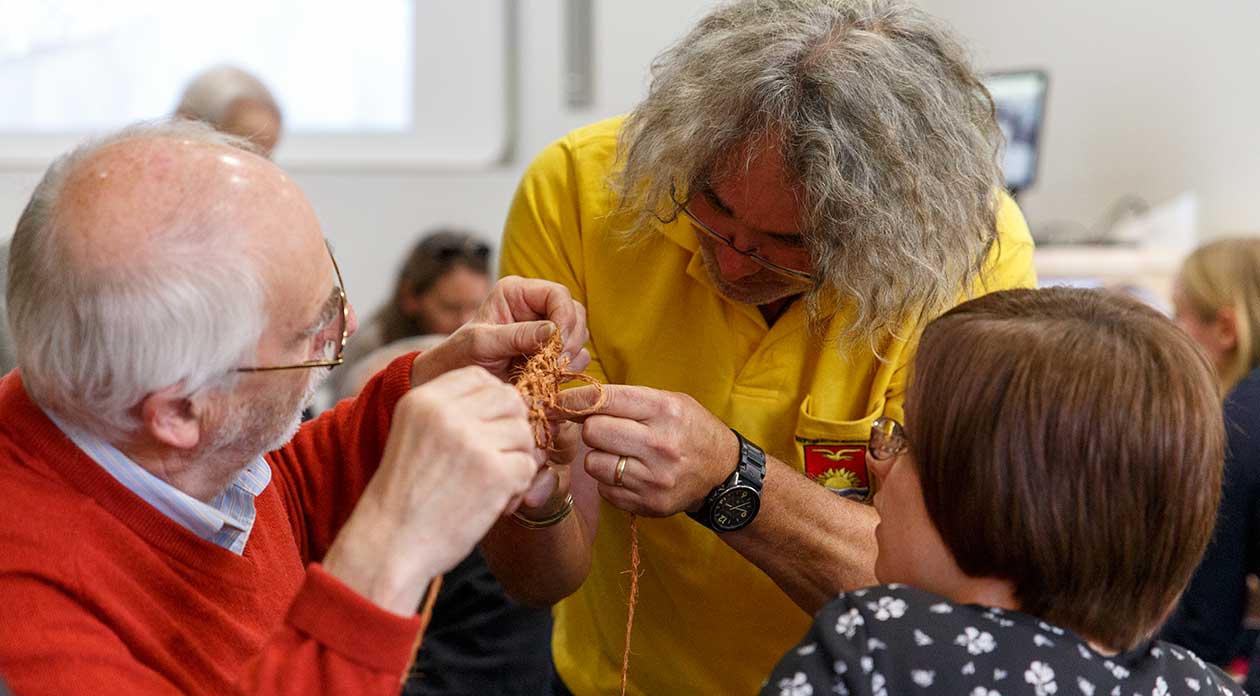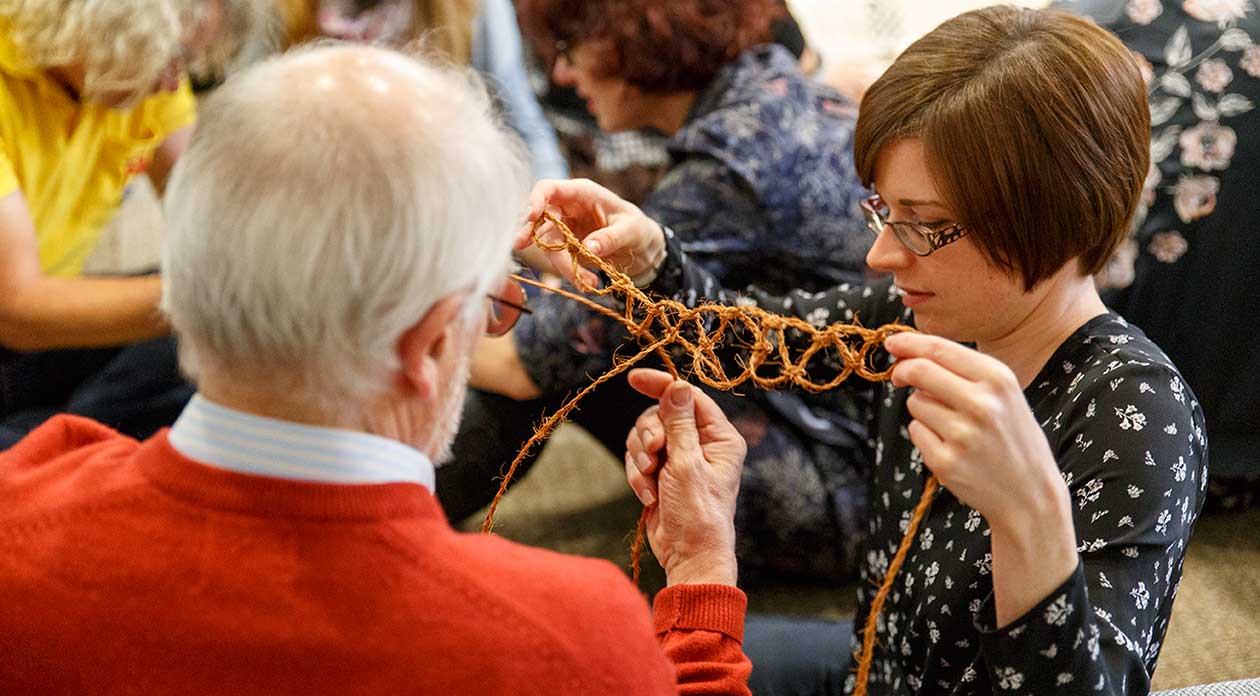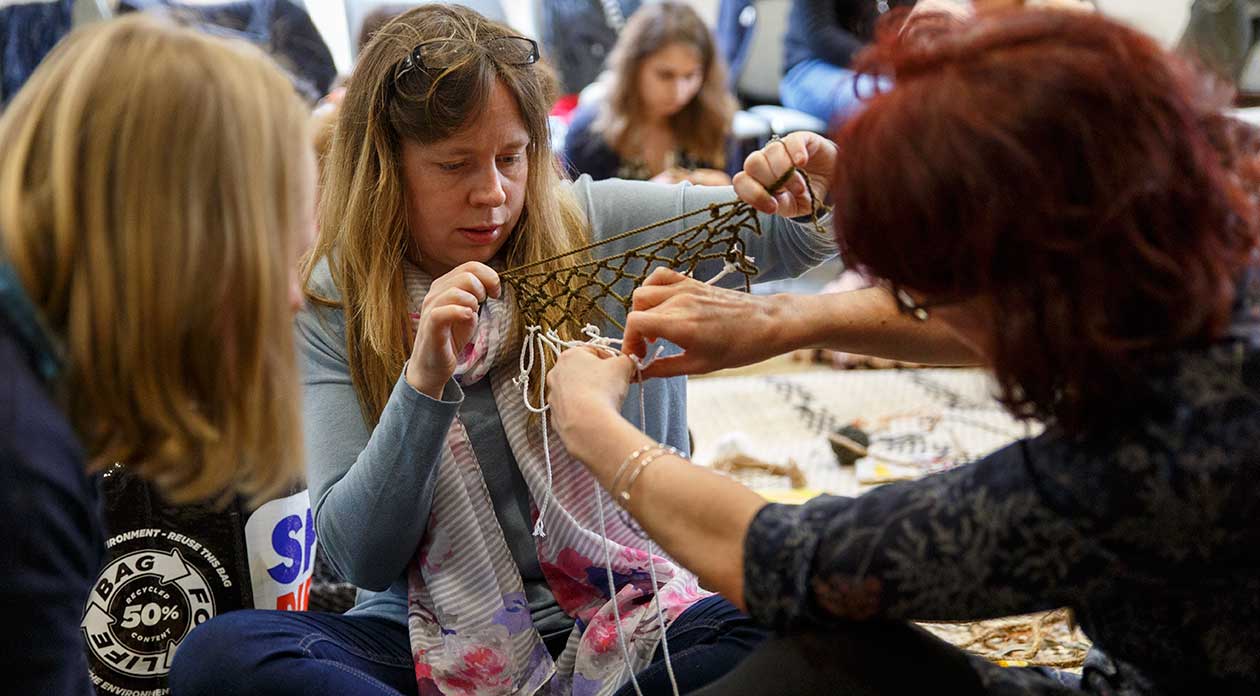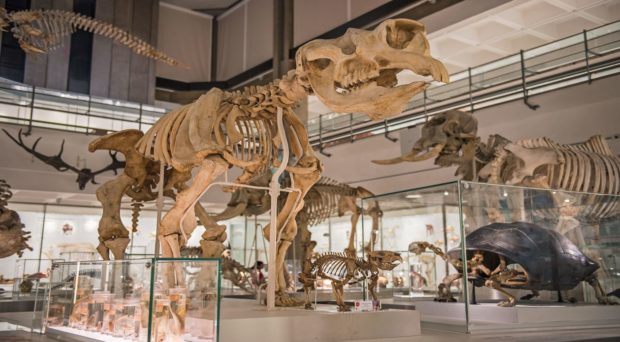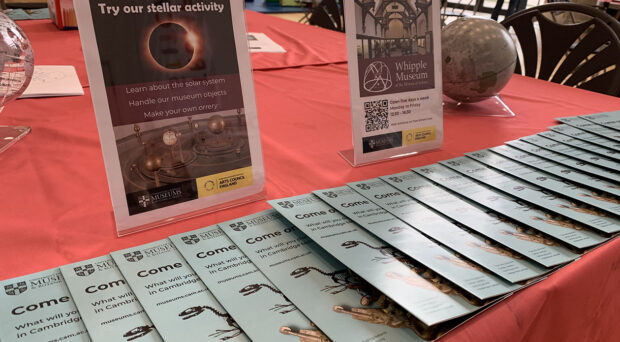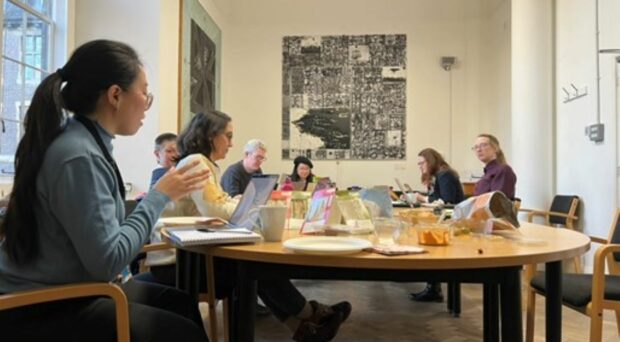In April the Museum of Archaeology and Anthropology, in conjunction with the British Museum held a one-day workshop on Kiribati armour.
Coconut fibre armour, from the Republic of Kiribati, is a distinctive composite artefact found in many museum collections around the world. It consists of a number of different components including trousers, sleeves, a cuirass with a high back piece, belts and helmets. The Kiribati Armour Project, which is part of the wider Pacific Presences project at the Museum of Archaeology and Anthropology (MAA), has been researching collections of armour in UK institutions in order to gain a better understanding of these complex objects. It aims to promote collaboration between disciplines and how that can aid our understanding of the objects in question. With that in mind the workshop was organised to gather museum professionals from different museums across the UK who have Kiribati armour in their collections and have worked on them recently. The aim was to share the knowledge gained from curating, investigating, and conserving these interesting objects.
Our day began with talks about various aspects of conservation of Kiribati coconut fibre armour. These came from a wide variety of speakers from all over the UK, and as a student I found it very interesting to have the opportunity to talk to people with different skills and perspectives.
Myself and Rachel Howie spoke about our own conservation work on a Kiribati shark-toothed sword and suit of coconut fibre armour respectively. We discussed the historical and social context of ceremonial battle, and talked about how and why we conserved the objects in the way we did. If you want to see the sword and suit of armour in all their conserved glory, they are on display in the Island Warrior exhibition at MAA until 26 September 2017, which contains more information about the use and conservation of these items.
It was also fascinating to hear about the different objects and projects that are active in the UK, and to discover that the amount of Kiribati coconut fibre material was much greater than I expected! It was very interesting to hear from Polly Bence of the British Museum about her project locating all of these pieces of armour in the UK, and it was encouraging to see the level of collaboration that this project has brought to the conservation of Kiribati armour.
As a museum that I have never visited, it was great to hear about the re-display (including beautifully detailed case plans) at the Horniman Museum from Sarah Byrne. I will definitely be making my way there for a visit, as well as to the Royal Albert Memorial Museum, which has an equally intriguing display of arms and armour from across Polynesia.
Although only a small comment from Julia Gresson, the highlight of the talks for me was a very neat trick using superglue, pipettes and razor blades to give a cross section of a fibre – something which I can’t wait to try out!
As the morning of talks drew to a close, there was an air of excitement about the afternoon of weaving, led by Kaetaeta Watson, Lizzy Leckie and Chris Charteris.
The three artists have embarked on the mammoth task of resurrecting lost weaving techniques to recreate a full suit of coconut fibre armour. This involved a lot of experimentation, trial and error, and the results that they produced are truly stunning.
As the chairs were pulled to the side of the room, and mats were spread out ready for us to sit on the floor and learn to weave, bags of exciting materials were brought out. From modern plastic cord to natural fibres it was interesting to see the variety of materials that could be used to weave armour from. We split into three groups and rotated throughout the afternoon to have a go at everything.
The technique for turning coconut fibres into usable string requires bare legs. If your legs were hairy beforehand, they certainly weren’t after rolling the coarse fibres up and down to encourage them to twist and lock into a strong cord!
When looking at the techniques for making the cuirass backboards, we experimented with a few of the different tools used by the artists. From a background in knitting and crochet, the needles looked most familiar, but were certainly the most difficult to use! The easiest tool to use consisted of a bone spike with a string tied through holes at both ends. The spike was pushed part way through the weaving, the cord that needed to be woven in was looped through the string and the tool pulled back out. It was simple and effective, and produced a nice tight weave, very similar to that found on historic armour!
For making the body of the armour, a traditional fishing knot was used. We learned on a loop tied to the back of the chair, and although our efforts weren’t the neatest, the technique was fairly easy to pick up. As an aside what was even more remarkable, was seeing the same knots in use on lobster pots on the Isle of Mull in Scotland!
Photos – Josh Murfitt 2017


